 Two things I love the most about the tiny, mountain town of Munduk: the amazing hiking and the day-to-day activities going on all around.
Two things I love the most about the tiny, mountain town of Munduk: the amazing hiking and the day-to-day activities going on all around.
Here, for the most part, people couldn’t care less about the ogling tourists in their “Bali” pants, snapping photos beside waterfalls and limitless scenic vistas. Whatever. They’ve got coffee cherries to pick, cloves to dry; they’ve got their offerings to prepare for family altars.
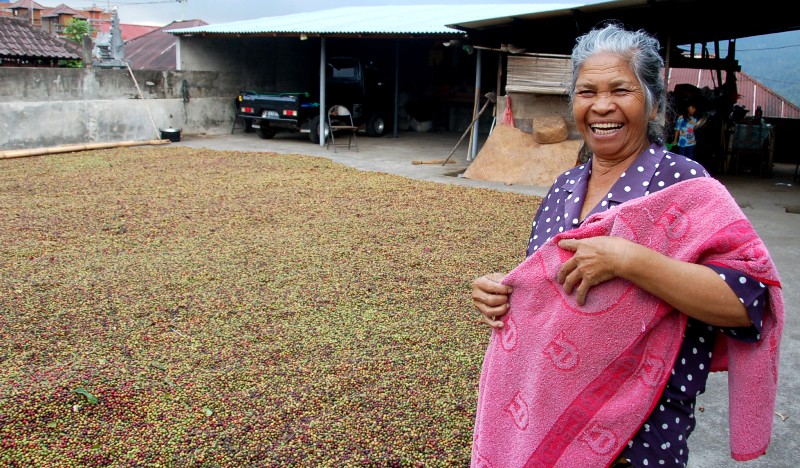
Munduk is everything that south Bali is not. It’s a place where the clean mountain air, stunning waterfalls and tiered rice paddies are all you need for a relaxing holiday. If you’ve come to Bali to shop or dine out, Munduk’s probably not for you. But if you’ve come to hike through chirping forests and rice fields that glow under the sun, then you’ll love it, too.
The hiking here is fantastic, with trails weaving through clove plantations, bamboo forests and waterfalls. Or, you can choose from several rice paddy walks where the tiered fields trip down hills dotted with palm trees and tiny temples. Most accommodations in Munduk provide a map for self-guided tours, and I’ve posted the one we used below, courtesy of Aditya Home Stay.
Getting to Munduk:
Public buses do go up to Munduk from Denpasar and Kuta (Bali map at end of post), but since we were already up on the north west end of Bali, coming from Pemuteran, we hired a private car to drive the hour and twenty minute journey to Munduk.
The town of Munduk:
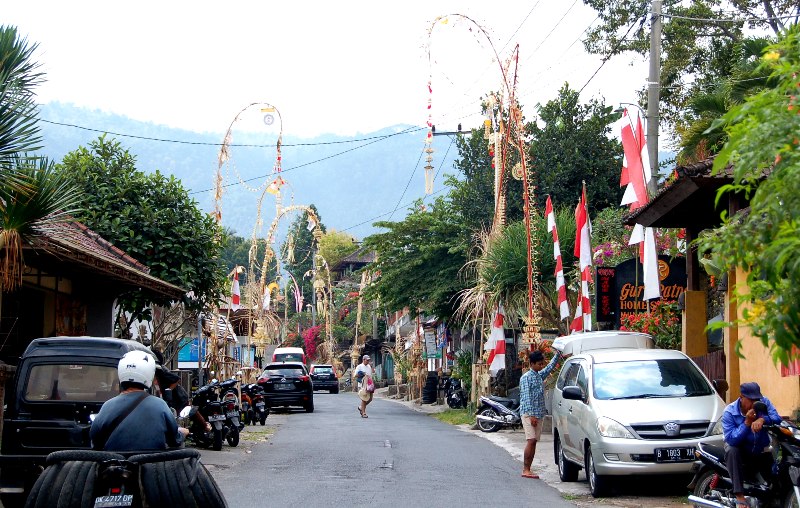
The town of Munduk more or less follows along the main road that winds through the mountains. Because it is so hilly, you can never really see much of the town beyond a few hundred meters at a time, as the road arches and curves out of sight, but on either side of the road, forests and fields stretch into the horizon.
It’s definitely a small town without much going on; in fact, most of the commercial businesses were home stays or small convenient shops called “toko’s” where snacks, drinks (including beer), kitchen supplies and toiletries can be purchased, along with a few handicrafts such a woven prayer boxes and other accouterments for family alters. The road is quite busy, and though we did walk up and down to check out the shops and find dinner, it felt a little dangerous at night due to the windy curves and lack of lighting.
Where to stay in Munduk:
We showed up in Munduk on August 17, which is Indonesia’s Independence Day holiday. We didn’t have reservations as the whole trip was rather last minute, and since the town isn’t that big, I was worried about finding a room. And while several of the more visible, western-tourist-oriented home stays were fully booked, there remained lots of home stays with a bit more local vibe … and cheaper prices (300,000 Rupiah or less).
We lucked out and found a great room at Aditya Home Stay. Highly recommended by the way; we payed 450,000 Rupiah for their nicest room: a huge, clean space with 360 degree views — well, maybe more like 270 degree probably (the featured post picture was taken from our balcony) –, a wrap around balcony all to ourselves and breakfast, a fan (no AC needed here), a room fridge, wifi and a large bathroom with both tub and shower! Here was the view from our breakfast table:
I’d guess Aditya had about fifteen or so guest rooms, but the family also lives on the grounds … hence the home stay. Here, the grandfather presents the morning offerings to his family altar, which sits in the center courtyard of the home stay.

Aditya Home Stay contact info:
Desa Munduk, Banjar, Buleleng, Bali; www.adityahomestay.com; +62-85-238-882-968
Hiking around Munduk
Munduk offers two major hikes: the waterfall hike and the rice paddies hike. Since we only had one afternoon in Munduk, we chose the waterfall hike … and it was wonderful. More on that in a minute. Also, from our balcony, we could see the beautiful rice fields, so we thought we’d check out the forest instead. The map below gives a [not to scale] gist of what’s on offer here:
The Munduk Waterfall Hike: How to find the start from the main road.
The Waterfall Hike begins off the main road, pretty much in the center of what constitutes the town. A school (“Sekolah”) sits to the right of the main road where you turn left down a narrow concrete alleyway. Both the school (left photo) and the alleyway (right photo) where you turn are pictured below.
From the alleyway, the path winds through a bit of village where tiny tokos sell incense and dried Munduk herbs: cocoa, coffee, vanilla, clove, etc.


From the village, you’ll soon hike through clove plantations where workers climb steep bamboo ladders to pluck clove buds from the eaves. The worker photographed below informed me it takes three hours to pick one kilogram (2.2 pounds) of cloves, which sells for a mere 100,000 Rupiah!
From there, the path winds through more clove trees as well as coffee, cocoa and banana trees … and a few pineapple plants popping up here and there. The closer you get to the steps leading down to the waterfall, the more dense the forest becomes. There are several footpaths snaking off here and there; many of which lead to the Melanting waterfall and are used by the locals as the concrete steps impose a 10,000 Rupiah toll.
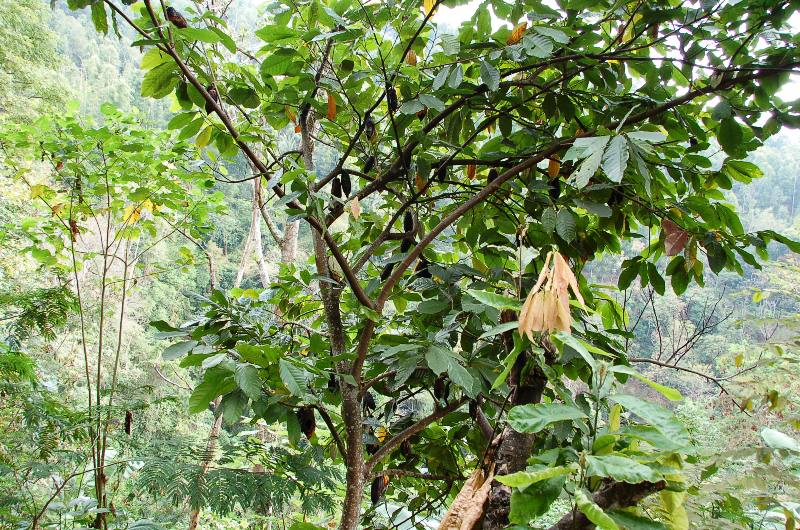
We actually took one of the footpaths as well, not to avoid the entrance fee but because we saw some of the local ladies coming from there and assumed it must be the way to go. We ended up just below the entrance gate for the concrete steps, so we climbed back up and paid for our tickets.
The stairs curl downwards for quite a distance until you reach the bottom where a pretty stream cuts through the jungle. Hang a left and then, the 60-meter waterfall of Melanting powers down from the jungle top. It’s gorgeous.
The hiking trail continues on to a smaller waterfall, but since it was starting to get dark, we followed the river for a distance and then cut through the forest to find the main road. The total hike only took us about two hours (stopping for photos included), but could have gone a lot longer; our hosts at Aditya estimated the entire hike (including both waterfalls) should take about three to four hours.
In any case, we thoroughly enjoyed the whole experience; the forest was beautiful and peaceful and clean — I don’t think we saw any trash at all –, and there were so many interesting trees along the way. For us, it was the perfect way to spend an afternoon. And while just hiking through the plantations and forest was reward enough, a highlight of our hike was stopping by a home-based coffee factory in the village where the trail starts, where an adorable twelve-year-old named Made and his grandfather showed us the process of coffee making, from start to finish! I think that will be my next post!
















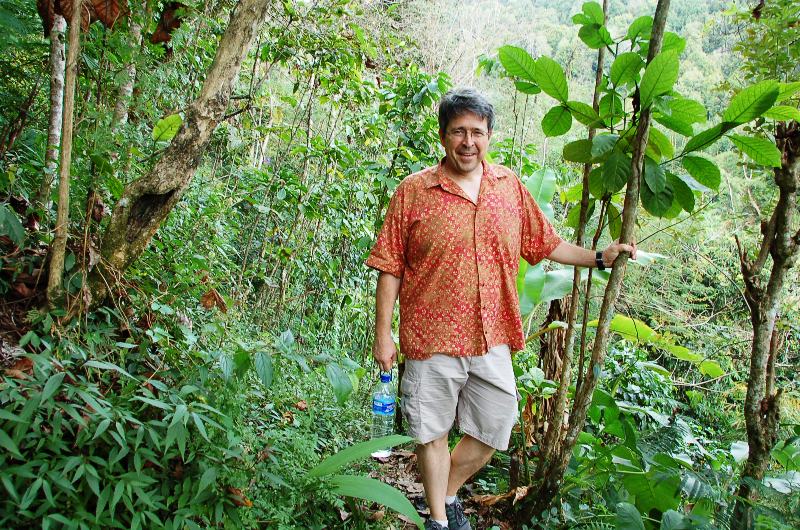




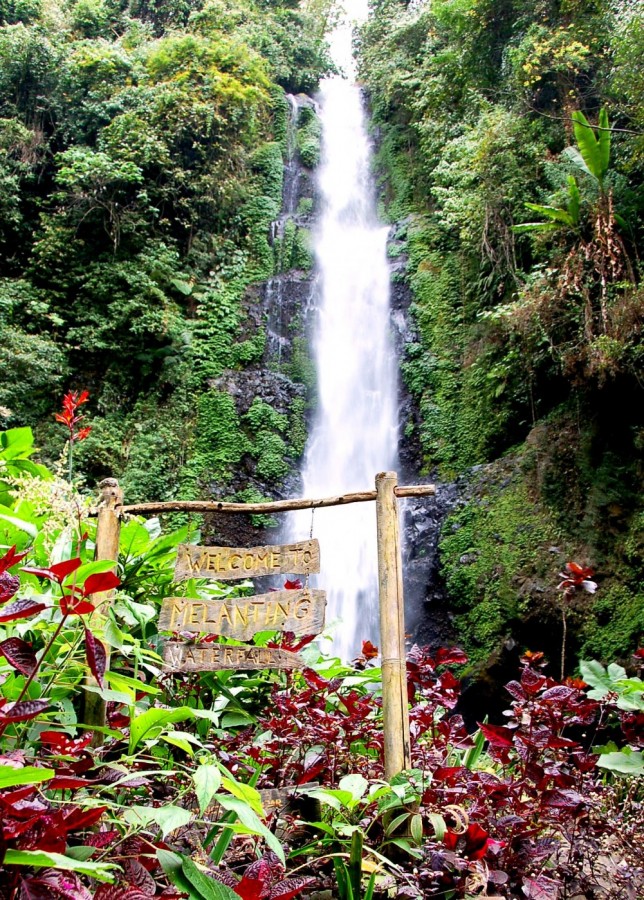

Wow! So beautiful!
A very good description of half of the walk.. it needs to be noted that in the wet season it is very treacherous. All,the concrete paths are slippery with green mould and moss due to daily afternoon showers. The rain after 1.pm was so,heavy that all,the paths and even the terraces were streaming with muddy water filling our boots and making visibility really difficult. Getting lost was not difficult. Even our back packs filled with water.
The rice field walk is just as beautiful. We did it twice. Charming place. Food at Aditya also very good.
Thanks for the feedback, Sally. I can see how it would get rather slippery in the rainy season, especially with the slope on some of the pathways being quite steep. But hats off to you for braving on, regardless of water-filled boots. Now, that takes dedication!